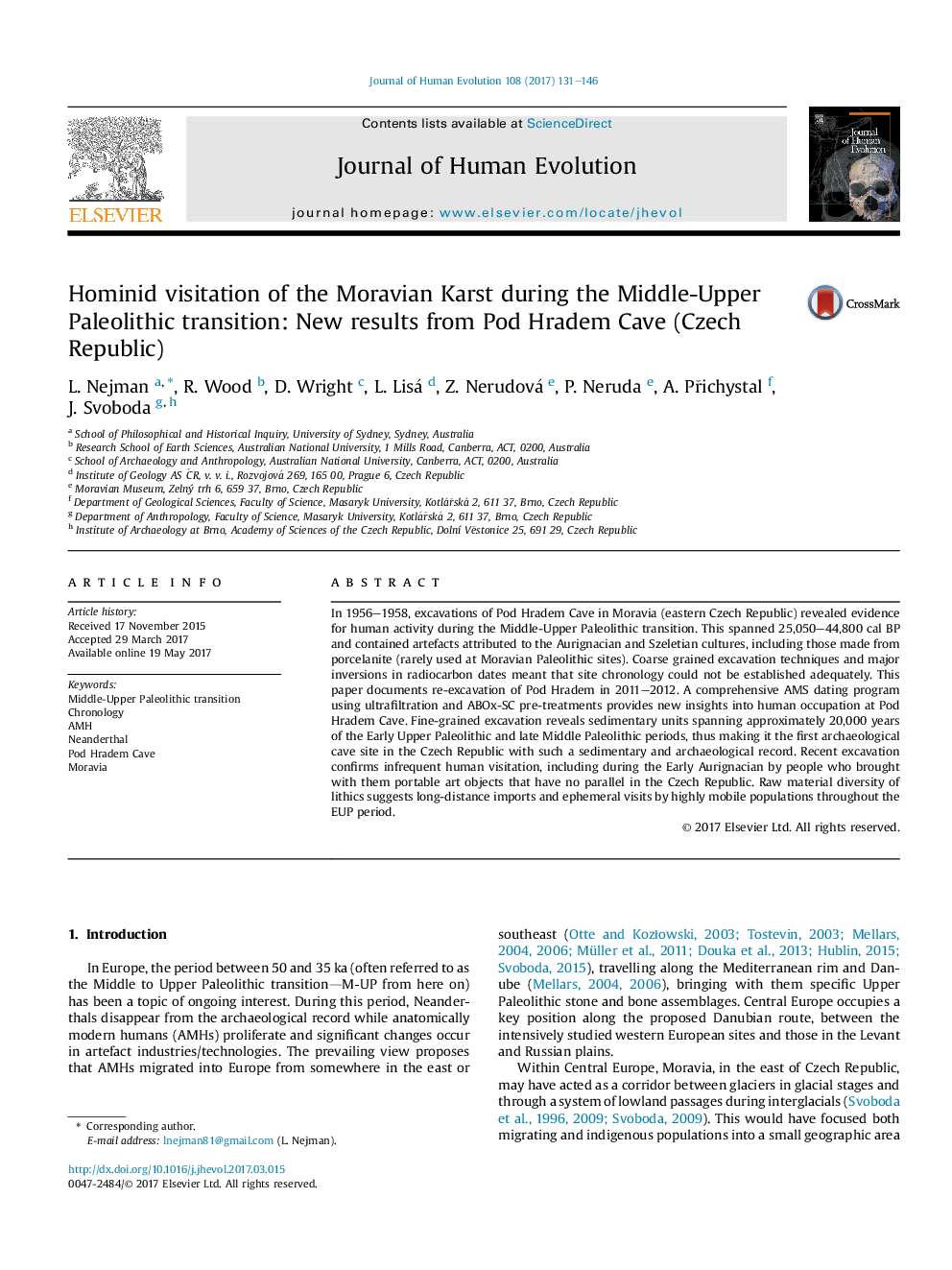| Article ID | Journal | Published Year | Pages | File Type |
|---|---|---|---|---|
| 5766830 | Journal of Human Evolution | 2017 | 16 Pages |
In 1956-1958, excavations of Pod Hradem Cave in Moravia (eastern Czech Republic) revealed evidence for human activity during the Middle-Upper Paleolithic transition. This spanned 25,050-44,800 cal BP and contained artefacts attributed to the Aurignacian and Szeletian cultures, including those made from porcelanite (rarely used at Moravian Paleolithic sites). Coarse grained excavation techniques and major inversions in radiocarbon dates meant that site chronology could not be established adequately. This paper documents re-excavation of Pod Hradem in 2011-2012. A comprehensive AMS dating program using ultrafiltration and ABOx-SC pre-treatments provides new insights into human occupation at Pod Hradem Cave. Fine-grained excavation reveals sedimentary units spanning approximately 20,000 years of the Early Upper Paleolithic and late Middle Paleolithic periods, thus making it the first archaeological cave site in the Czech Republic with such a sedimentary and archaeological record. Recent excavation confirms infrequent human visitation, including during the Early Aurignacian by people who brought with them portable art objects that have no parallel in the Czech Republic. Raw material diversity of lithics suggests long-distance imports and ephemeral visits by highly mobile populations throughout the EUP period.
